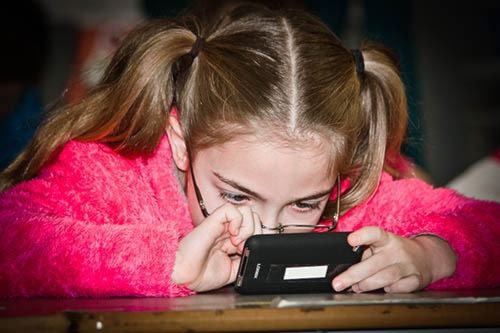The local school district is employing devices some consider toys to teach kids to read, with unheard of success.
The iPod Literacy Project uses iPod Touches and iPad Minis, which are primarily marketed for music, video and gaming capabilities, to ensure children get through Grade 4 with a good grasp of the written word.
Almost all the students in the 19 classes that are part of the iPod Literacy Project are meeting expectations.
“Looking at the level of achievement – that’s not normal,” said David Vandergugten, director of instruction.
The published results have more teachers in the district wanting to get iPods into their classrooms, and it has neighbouring school boards visiting to see how the program works.
Vancouver trustees have visited the Maple Ridge-Pitt Meadows School District three times to review the iPod Literacy Project.
The district chose Grades 2, 3 and 4 for the unique program, because that is a critical time to develop literacy.
Vandergugten said correlation can be drawn between students leaving these early grades lacking the necessary skill set, and whether they ultimately graduate from high school.
The way the program works: the devices have literacy apps downloaded; students read aloud into the device and have their voice recorded; then they can play it back, and listen to themselves reading, and evaluate how they did.
If there is a word they don’t know, they can press it, and the device will say it. They don’t spend a lot of time decoding a word, which keeps reading enjoyable.
They can also have an entire book read to them, with the words being underlined on the screen, as they are spoken.
The kids have their own mini libraries, through the apps Tumblebooks and Learning A-Z, with e-books covering topics ranging “from jet fighters to teddy bears,” said Vandergugten.
“Literally, a student is walking around with 400 or 500 books in their hand.”
Students can be self-conscious if they are not reading well. In a traditional library, they might pretend to be reading at a high level, and pick a book beyond their comprehension – because other kids would be looking at the book they selected.
With the devices, which are more private, teachers report that students are more apt to choose a book that is appropriate to their own literacy level.
The teachers’ devices synchronize with every student in their class. At any time, they can have a listen to their students’ audio files of their reading.
There is a formalized process of evaluation for educators, but Vandergugten said the improved quality of reading aloud by the students over the school year is easily appreciated, even to a layperson.
“It’s really made a difference for a ton of kids. I’m hoping to continue to expand the program.”
Three Septembers ago, the program started in two classes, and Vandergugten will look to grow it beyond the present 19 as teachers apply to the board to join.
“I prefer to grow slow,” said Vandergugten.
He wants a complete “buy-in” by the teachers involved, and he knows that’s the case when they apply for devices.
The board supplies the devices, which are shared between two students, and which stay at their respective schools. They cost $229 each, so the per-student cost is $114.50.
“I don’t want them collecting dust.”
There are other educational apps that are popular, too.
“I know Math Bingo – the kids go crazy for that one,” recommends Vandergugten. “A lot of parents don’t realize the number of great apps for education.”
“It’s not just Angry Birds.”
